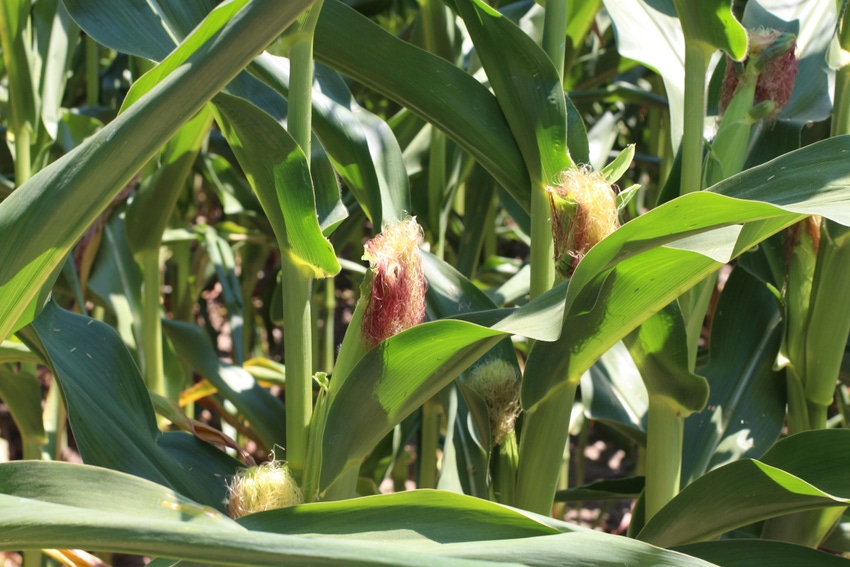September 22, 2022

Corn kernels achieve black layer or physiological maturity when a black film develops at the tip of a kernel. The black film or layer seals the kernel from further development or increase in test weight. The kernel moisture content at black layer formation usually ranges from 25% to 40%, and averages around 30% moisture.
Physiological maturity is greatly influenced by the relative maturity (RM) of the individual corn product. Short season products mature earlier than fuller season products. This genetic characteristic allows for the selection and planting of different corn products to spread out (over time) the maturation of a farming operation’s corn crop. This helps with harvest scheduling as all corn acres are not maturing at the same time.

Figure 1. Corn kernel stages to black layer.
Environmental stress can affect the timing of maturation. Severe drought can cause plants to die prematurely and kernels to form a premature black layer. Cool weather during the growing season can delay the normal maturation for an individual product because the growing degree units (GDUs) required to achieve maturity accumulate slower.
Grain moisture content should start to be monitored soon after physiological maturity (black layer). A harvest moisture content level that balances harvest losses and grain drying costs helps maximize the economic return potential. A plan to take advantage of a rapid drydown and allow everything to field dry could be costly. Harvesting at lower moistures can increase mechanical losses due to ear drop, stalk lodging, and kernel shattering. Consider beginning harvest when corn grain moisture content is a little above 25% so harvesting can be finished before corn dries completely in the field.1
With high temperatures, it is extremely easy to underestimate the rate that grain dries. Grain that matures in late July can have an average daily drydown rate of approximately 0.8 percentage point per day compared to 0.4 percentage point per day for grain nearing maturity later in the season. Regardless of the environment, it is normal to see later RM corn products reach harvestable moisture levels (around 25%) later than earlier RM products. Product drydown rates are influenced by many product characteristics, such as tightness of husk leaves and pericarp thickness of the seed.2
In addition to harvesting at an optimum grain moisture content, achieving proper combine settings can help increase combine efficiency, maximize grain quality, and minimize field losses. Always follow the manufacturer’s equipment setting recommendations.
Source: DeKalb Asgrow, who is solely responsible for the information provided and is wholly owned by the source. Informa Business Media and all its subsidiaries are not responsible for any of the content contained in this information asset.
You May Also Like




